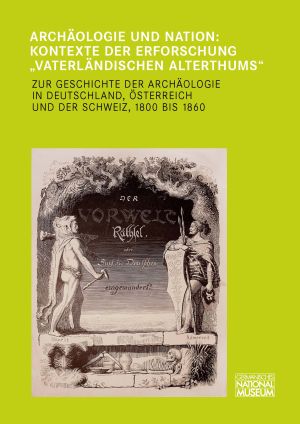How to Cite
License (Chapter)

This work is licensed under a Creative Commons Attribution-NonCommercial-NoDerivatives 4.0 International License.
Published
Der Historische Verein zu Bamberg und die ethnische Deutung der oberfränkischen Grabhügel
The Bamberg Historical Association and the Ethnic Interpretation of Upper Franconian Burial Mounds
Over the course of barely fifteen years during the second third of the 19th century, the ethnic interpretation of Upper Franconian burial mounds underwent a rapid evolution. In the mid-1820s, the independent scholar Joseph Heller and the clergyman Nikolaus Haas declared their opinion that the ‘Wends or Winds’, a Slavic population that had occupied the territory from the 8th century onwards, were the builders of the burial mounds. They based their theory on written sources from the Middle Ages. In line with this assumption, they interpretated the grave goods uncovered in their excavations as Slavic material culture. They also portrayed the Slavs in a somewhat romanticized light. In his writings, Haas went so far as to identify them – along with the Christian Germans – as the forbears of the extant Upper Franconian population. In the 1830s, however, this interpretation began to be disputed. Those burials, in particular, which had larger inventories or better-quality pottery or metal artefacts – nowadays attributed to the Bronze Age or to the Hallstatt or La Tène Cultures – were claimed as the cultural remains of ‘Germanic’ or ‘German’ people. In the early 1840s, thanks to numerous excavations by the clergyman Lukas Hermann and their subsequent publication, this became the established view. During this period, local archaeology in Upper Franconia increasingly felt the pull of German nationalist fervour. The early historical and archaeological research of the Bamberg Historical Association, however, was shaped by different underlying motivations. Founded in 1830, the association was initially influenced by the historical politics of the Bavarian king, Ludwig I. In his efforts to integrate the former self-ruling entities that had been annexed by Bavaria in the wake of secularization, Ludwig wanted to establish a pan-Bavarian revisionist view of history. In the former archbishopric of Bamberg, however, the Bamberg Historical Association responded in its own way to this proposed new identity. Its activities, in fact, offered an opportunity of perpetuating the idea of Bamberg’s independent sovereignty, lost as a result of secularization, through the subtext of historical and archaeological articles published in its journal about the foundation story of the bishopric, established as a mission to the Slavs in 1007.







